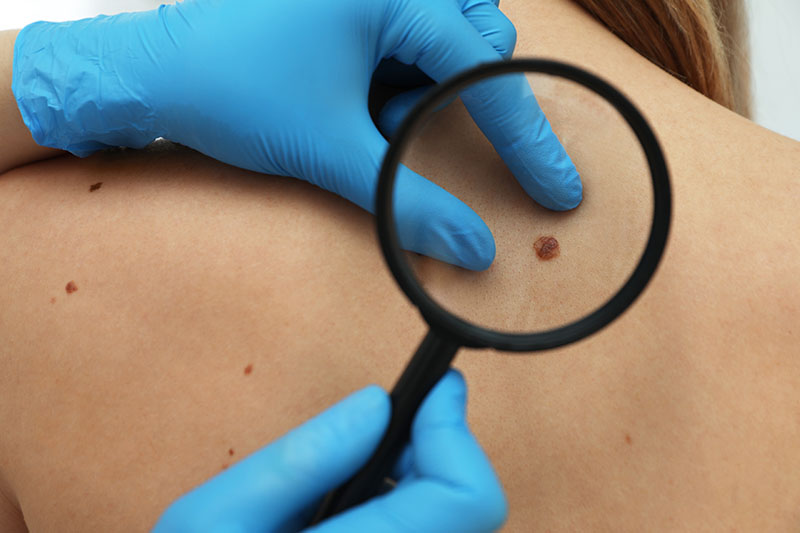
May is Skin Cancer Awareness Month! This year, Mohs Micrographic Surgery and Dermatologic Oncology Fellow David Wang, MD, FAAD, from the Brigham and Women’s Mohs and Dermatologic Surgery Center at Brigham and Women’s Faulkner Hospital gives us the facts on the most common types of skin cancer and how to recognize them.
“Skin cancer occurs when the cells in the skin grow abnormally and form malignant tumors,” explains Dr. Wang. “There are several types of skin cancer, each with its own characteristics and potential risks. It’s helpful to understand the main types of skin cancer and what to look out for.”
Basal Cell Carcinoma (BCC)
BCC is the most common type of skin cancer. It typically appears on sun-exposed areas such as the face, neck and hands. BCC grows slowly and rarely spreads to other parts of the body. It often appears as a pearly or waxy bump, a flat, flesh-colored or brown scar-like lesion or a pink growth with raised edges. Although it is rarely life-threatening, early detection and treatment are essential to prevent damage to surrounding tissues.
Squamous Cell Carcinoma (SCC)
SCC is the second most common type of skin cancer. Like BCC, it usually occurs on sun-exposed areas. SCC can grow and spread more aggressively than BCC, potentially reaching deeper layers of the skin and spreading to lymph nodes or other organs. It typically appears as a red, scaly patch, a sore that doesn’t heal or a firm, raised growth with a crusted surface. Early diagnosis and treatment are crucial to prevent complications.
Melanoma
Melanoma is the most dangerous type of skin cancer but is less common than BCC and SCC. It develops from melanocytes, the cells that produce pigment in the skin. Melanoma can occur on any skin surface, including areas not exposed to the sun. It often appears as a mole or a new, unusual growth. Melanomas can be asymmetrical, have irregular borders, display multiple colors and change in size or shape. Early detection is vital, as melanoma can metastasize and spread to other parts of the body, making it more challenging to treat.
“It’s most important to remember that prevention and early detection are essential in the fight against skin cancer,” says Dr. Wang.
Dr. Wang suggests protecting your skin from harmful UV radiation by applying broad-spectrum sunscreen, wearing protective clothing, seeking shade and avoiding excessive sun exposure. He also recommends regular self-examinations and regular skin checks with a dermatologist to help identify any suspicious moles or lesions and facilitate early intervention if needed.
To make an appointment with Dr. David Wang or another dermatologist at Brigham and Women’s Faulkner Hospital, call 617-983-7500.
Published 5/12/23
Looking for more news from BWFH? Go to News to find articles about health, updates to our programs and services and stories about staff and patients.
Go to News